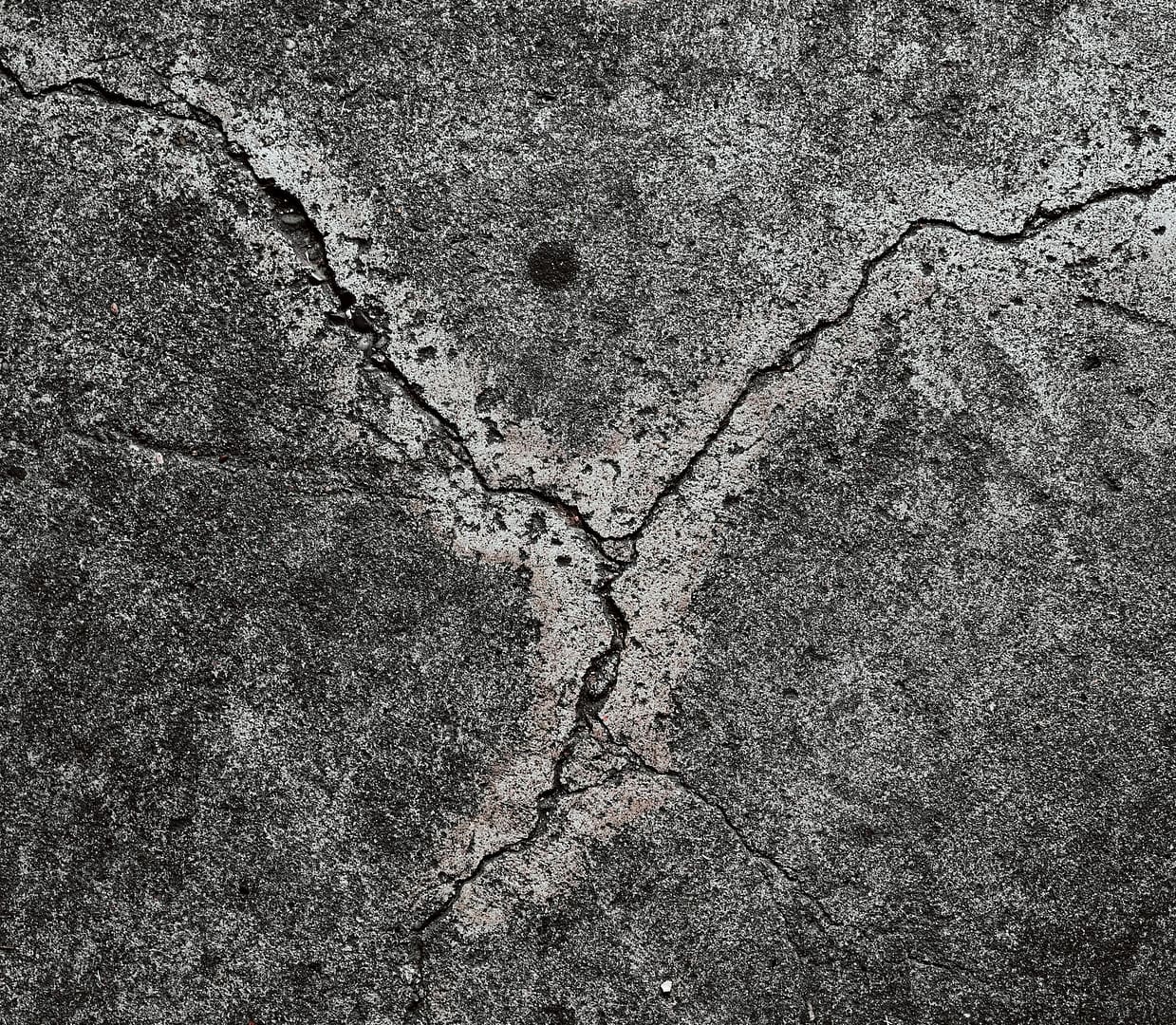Cracked walls in social housing can be more than just unsightly blemishes on the surface. They are often indicative of deeper issues that can pose serious risks to the safety and well-being of residents. In this article, we will delve into the dangers of cracked walls in social housing, exploring the potential structural problems they may signal and the consequences that can follow if left unaddressed. We will also walk you through the steps you should take in order to make a housing disrepair claim.
The Silent Signals: What Are the Dangers of Cracked Walls?
Cracked walls in social housing are more than a mere cosmetic concern. They serve as silent messengers, attempting to communicate a range of underlying issues that, if ignored, can escalate into significant problems. Here are some of the key dangers associated with cracked walls:
Water Infiltration and Mould Growth
One of the most common dangers of cracked walls is the potential for water infiltration. When cracks form, they create openings through which rainwater or moisture can seep into the building’s structure. Over time, this can lead to dampness and create the perfect environment for mould growth. Mould not only damages the structure but also poses health risks to occupants, especially those with respiratory conditions.
Decreased Energy Efficiency
Cracks in walls can compromise the insulation of a building. This results in reduced energy efficiency, as heated or cooled air can escape through these gaps. As a consequence, residents may experience higher energy bills, making it more challenging for them to maintain a comfortable living environment.
Structural Instability
Perhaps the most concerning danger associated with cracked walls is the potential for structural instability. While not all wall cracks signify a structural problem, some can indicate a weakening of the building’s foundation or framework. This can lead to the risk of a collapse, putting lives in danger.
Safety Hazards
Apart from structural concerns, cracked walls can also present immediate safety hazards. For instance, large or jagged cracks may cause injuries if someone accidentally bumps into them or if debris falls from the walls. These hazards are particularly worrisome in social housing, where vulnerable populations, including children and the elderly, reside.
Property Value Decline
Cracked walls can have a detrimental effect on the property value of social housing units. Potential buyers or tenants are likely to be deterred by the presence of visible structural issues. This can lead to a decreased demand for such housing, affecting the overall viability of social housing programs.
Now that we have a clearer understanding of the dangers posed by cracked walls, let’s explore a pressing question: Do cracks in walls always indicate a structural problem?
Cracks in Walls: Do They Always Indicate a Structural Problem?
Not all cracks in walls are created equal. Some are superficial and purely cosmetic, while others may indeed signal deeper structural issues. It’s essential to distinguish between these two types of cracks to determine the appropriate course of action.
Superficial Cracks
Superficial cracks are typically those that are less than 1/8 inch wide and run along the surface of the wall. They are often the result of settlement, minor shifts in the foundation, or even normal wear and tear over time. While these cracks can be unsightly, they are not necessarily indicative of a significant structural problem. However, they should not be ignored entirely, as they can still lead to issues such as water infiltration and reduced energy efficiency.
Structural Cracks
On the other hand, structural cracks are more severe and usually wider than 1/8 inch. These cracks may appear at corners or intersections of walls, around doors or windows, or in a zigzag pattern across the wall. Structural cracks are a cause for concern because they suggest a potential compromise in the building’s stability. They can result from foundation problems, excessive settling, or even poor construction practices.
To determine whether a crack is structural or superficial, it’s crucial to consult with a qualified building inspector or structural engineer. They can assess the severity of the crack, perform necessary tests, and provide recommendations for repairs or further investigations.
The Consequences of Ignoring Cracked Walls
Now that we understand the dangers associated with cracked walls and the distinction between superficial and structural cracks, let’s delve into the consequences of ignoring these warning signs in social housing.
Health Implications
Ignoring cracked walls can lead to health problems for residents. As mentioned earlier, water infiltration and mould growth are common outcomes of neglected cracks. Mould spores can exacerbate respiratory conditions, cause allergies, and contribute to a range of health issues. In social housing, where residents often have limited access to healthcare, these health implications can be particularly devastating.
Increased Maintenance Costs
Cracked walls left unattended can lead to more extensive and costly repairs down the line. What might have been a relatively simple fix can escalate into a major renovation project if not addressed promptly. Social housing programs often operate on tight budgets, and allocating funds for extensive repairs can strain available resources.
Reduced Quality of Life
Residents of social housing deserve safe and comfortable living conditions. Ignoring cracked walls can result in a reduced quality of life for these individuals and families. The presence of structural issues can lead to discomfort, anxiety, and insecurity, further perpetuating the cycle of poverty and social inequality.
Legal and Liability Issues
Failure to address structural problems in social housing can have legal ramifications. Landlords or housing authorities may be held liable for injuries or health problems that residents experience due to neglected maintenance. Legal battles can be costly and tarnish the reputation of social housing programs.
Decreased Property Value
For housing authorities, the long-term viability of social housing programs can be compromised by the neglect of cracked walls. As property values decline, the return on investment diminishes, making it challenging to secure funding for future projects. This, in turn, affects the availability of affordable housing for those in need.
Addressing the Issue: The Importance of Timely Repairs
The dangers of cracked walls in social housing are undeniable, but there is hope. Timely repairs and proactive maintenance can mitigate many of the risks associated with cracked walls. Here are some steps that housing authorities, landlords, and residents can take to address this issue effectively:
Regular Inspections
Implement a routine inspection schedule to identify cracks and structural issues early on. Trained professionals should conduct these inspections to accurately assess the severity of any problems.
Immediate Repairs
For superficial cracks, swift action is essential. Seal these cracks to prevent water infiltration and further damage. If structural cracks are identified, consult with a structural engineer or building inspector to determine the appropriate repairs.
Moisture Control
Implement moisture control measures to prevent mould growth. This may include improving ventilation, addressing leaks, and maintaining proper humidity levels within housing units.
Budget Allocation
Allocate sufficient funds for maintenance and repairs within the social housing program’s budget. While this may require an initial investment, it can save money in the long run by preventing more extensive damage.
How Much Compensation For Damp And Mould UK?
To find out how much compensation you can receive for your housing disrepair, it is best to fill out one of our claims forms that can be found throughout our website.
Making a Housing Disrepair Claim with National Claims
At National Claims, we understand the gravity of cracked walls in social housing and the dangers they pose. We are committed to helping residents and housing authorities address these issues promptly and effectively. If you believe that your social housing unit has cracked walls that have been neglected, you may be eligible to make a housing disrepair claim.
Our team of experts specialises in housing disrepair claims, advocating for residents’ rights and ensuring that necessary repairs are carried out. We can guide you through the claims process, from assessing the severity of the issue to seeking compensation for any harm or inconvenience you have experienced due to the neglected maintenance.
To initiate a housing disrepair claim with National Claims, please reach out to our dedicated team today. We are here to support you in making your social housing unit a safe and comfortable place to call home.

Conclusion
Cracked walls in social housing are not to be taken lightly. They are the silent indicators of potential dangers that can jeopardise the well-being of residents and the long-term viability of social housing programs. Recognising the significance of cracked walls, distinguishing between superficial and structural cracks, and taking proactive measures to address them are essential steps towards ensuring safe and dignified living conditions for all.
By addressing cracked walls promptly, we can mitigate health risks, reduce maintenance costs, enhance the quality of life for residents, and uphold the principles of social equality and justice. It is our collective responsibility to prioritise the safety and comfort of those who rely on social housing, and together, we can build stronger, safer communities.
Contact us today and start your claim for your housing disrepair with one of our claims specialists.
Click below to see why we are one of the most trusted claims management companies in the UK.

We’re proud of our excellent customer reviews
We thrive on delivering exceptional service and ensuring our clients’ satisfaction. Don’t just take our word for it. Check out some of our independent reviews to see what our clients have to say.
Excellent

This firm is excellent, they sorted out my car pay out and injury claim very fast, they always communicate with you all the time.

My accident case was dealt with confidence and with great result of the outcome, especially James kept me informed all the time.

I was very impressed at the way my inquiry was treated. I was listened to attentively and everything I needed to know was explained to me.






